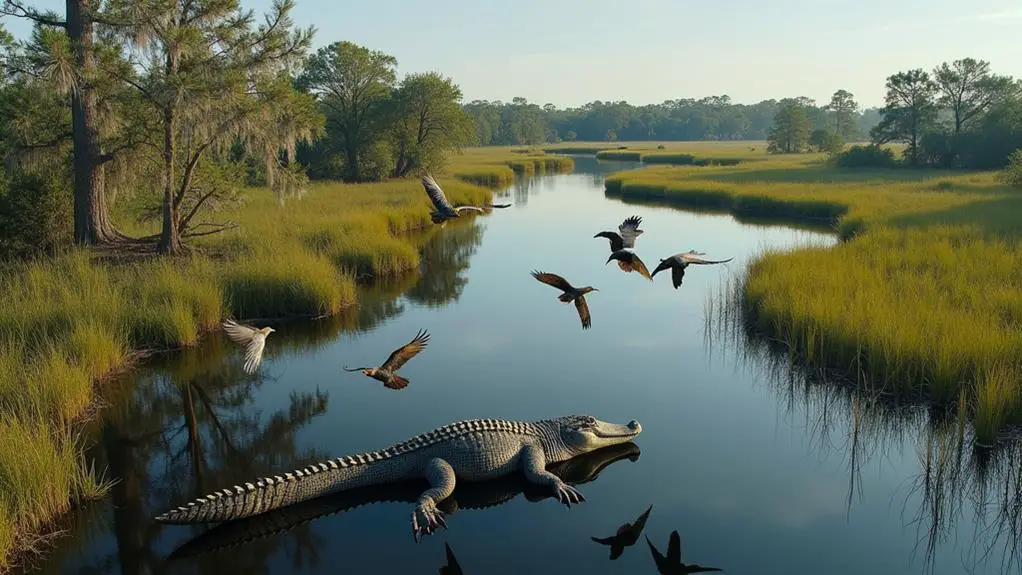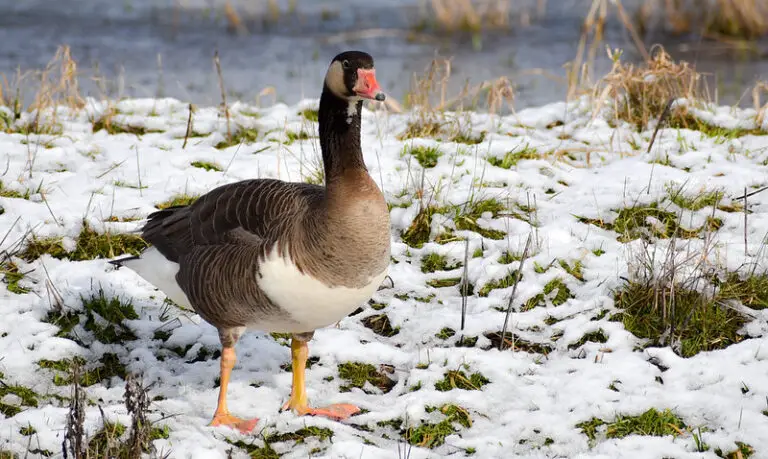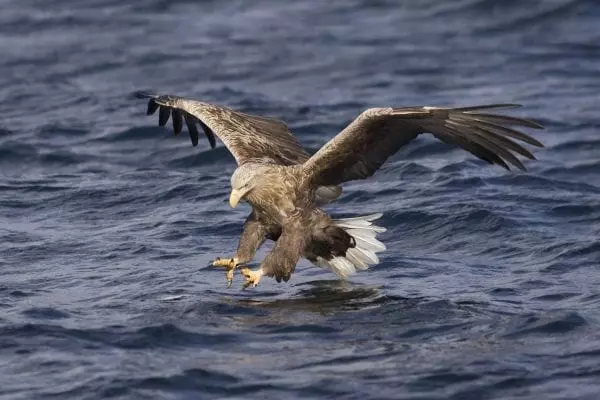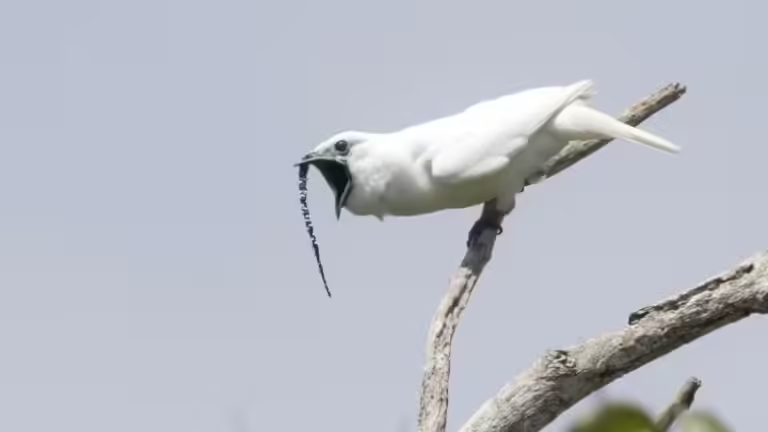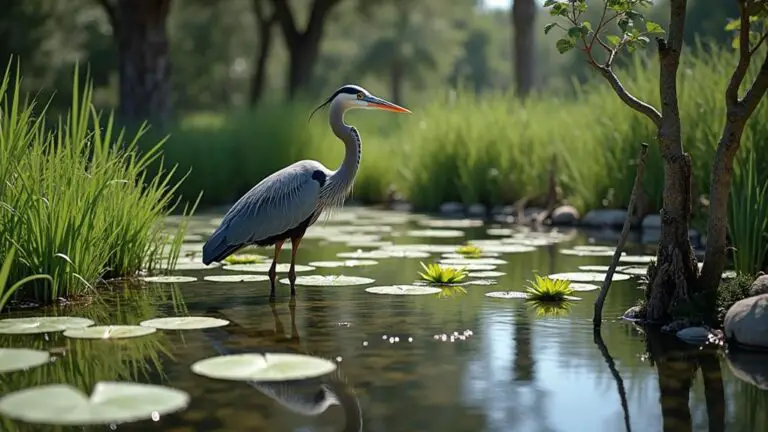As you explore the Sunshine State, you might notice the presence of vultures, particularly in areas with an abundance of food sources. You’re likely to spot them near highways, roads, and landfills, where they scavenge for carrion and food waste. But what exactly draws these birds to Florida? Is it the state’s mild winters, subtropical climate, or the numerous freshwater sources? Or is it something more complex, like human activity and the resulting litter generation? As you consider these factors, you begin to realize that the answer might be more multifaceted than you initially thought.
Key Takeaways
- Abundant food sources, including dead fish, small mammals, and domesticated animals, attract vultures to Florida.
- Roadkill is a significant attractant for vultures, drawing them to highways and roads with high wildlife corridors.
- Mild winters and year-round warm temperatures create a favorable environment for vultures in Florida’s subtropical region.
- Freshwater sources, such as lakes, rivers, and wetlands, play a crucial role in attracting vultures to Florida.
- Tree cavities, rocky outcrops, and other suitable nesting sites are essential for vulture breeding and survival in Florida.
Abundance of Food Sources
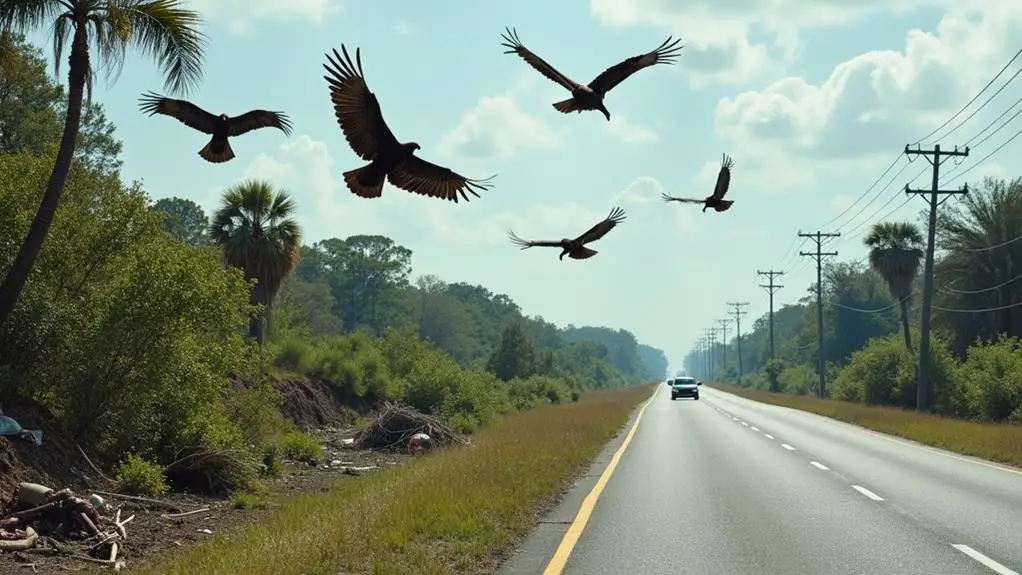
When you think of vultures in Florida, it’s likely that images of scavenging birds feeding on carcasses come to mind.
This association is rooted in the birds’ unique feeding behavior, which is largely driven by food availability. In Florida, vultures have access to a diverse range of food sources, including dead fish, small mammals, and even domesticated animals that have died or been discarded.
As a result, food scarcity isn’t a significant issue for vultures in the state.
The abundance of food sources in Florida has a significant impact on the hunting patterns of vultures.
Unlike other birds of prey that actively hunt their prey, vultures are scavengers that rely on finding carrion to survive. In Florida, the availability of food is such that vultures can adopt a relatively relaxed approach to foraging, with some individuals even engaging in “communal feeding,” where multiple birds gather to feed on a single carcass.
This behavior is made possible by the state’s abundant food sources, which support a thriving vulture population. By studying the feeding behavior of vultures in Florida, researchers can gain valuable insights into the ecology and behavior of these fascinating birds.
Favorable Climate Conditions
You’ll find that Florida’s climate is particularly appealing to vultures due to its mild winters, which allow the birds to forage year-round without the need for seasonal migration.
The state’s subtropical region, characterized by year-round warm temperatures, also makes it an ideal location for vultures to thrive.
Mild Winters Attract Birds
Mild winters in Florida create favorable climate conditions that attract many bird species, including vultures.
You may notice an influx of bird populations during winter months, which is due in part to the state’s mild winters. As a result of these favorable conditions, many bird species, including vultures, migrate to Florida for the winter, contributing to the state’s diverse bird populations.
Winter migrations are a common phenomenon in the avian world, with many species traveling to warmer climates to escape harsh weather conditions.
In the case of Florida, its mild winters provide an ideal refuge for birds seeking to escape cold temperatures and scarce food sources. The state’s location along the eastern seaboard makes it a critical stopover point for many migratory bird species, including vultures.
As a result, you can expect to see an increase in vulture populations during the winter months, particularly in areas with abundant food sources and suitable habitats. This influx of vultures contributes to the state’s rich biodiversity and provides opportunities for ornithological research and observation.
Year-Round Warm Temperatures
Year-Round Warm Temperatures
As the state’s geographic location near the equator contributes to its subtropical climate, Florida’s year-round warm temperatures create a favorable environment that attracts vultures. You might notice that vultures tend to thrive in areas with minimal temperature fluctuations. When temperatures remain relatively warm throughout the year, it allows vultures to maintain a stable metabolism, which is essential for their survival.
Florida’s temperature conditions are ideal for vultures, as shown in the table below:
| Season | Average Temperature Range (°F) |
|---|---|
| Spring | 70-85 |
| Summer | 80-90 |
| Autumn | 70-80 |
| Winter | 60-75 |
In comparison to other states, Florida’s mild temperature fluctuations make it an attractive location for vultures. The absence of harsh winters allows vultures to avoid warm migrations, which can be energetically costly. As a result, vultures are able to conserve energy and allocate it towards other essential activities, such as foraging and breeding.
Subtropical Region Suitability
As a subtropical region, Florida’s suitability for vultures isn’t solely determined by its temperature; the state’s unique combination of climate conditions also play a significant role in attracting these birds.
You’ll find that the region’s subtropical climate supports an array of habitat types, ranging from mangrove forests to pine flatwoods.
This habitat diversity is crucial for vultures, as it provides them with a variety of foraging and roosting opportunities.
Florida’s subtropical region is also characterized by forest fragmentation, which creates a mosaic of forest patches and open areas.
This fragmented landscape allows vultures to move freely between habitats, exploiting different food sources and roosting sites.
The combination of warm temperatures and diverse habitat types creates an ideal environment for vultures to thrive.
You’ll notice that the interaction between climate and habitat is critical for vulture populations in Florida.
The state’s subtropical region provides the perfect blend of warmth, humidity, and habitat diversity, making it an attractive location for vultures.
Availability of Water

Water sources in Florida play a crucial role in attracting vultures, with these birds often congregating near areas where they can easily access water for drinking and bathing.
You’ll notice that vultures tend to thrive in environments with an abundance of freshwater sources, such as lakes, rivers, and wetlands.
The quality of the water also plays a significant role in attracting vultures. These birds prefer areas with good water quality, as it allows them to stay healthy and thrive.
In fact, research has shown that vultures are more likely to inhabit areas with clean water sources, as opposed to areas with polluted or contaminated water.
The aquatic habitat surrounding these water sources also contributes to the attractiveness of an area for vultures.
Vultures require a diverse range of aquatic habitats to survive, including shallow waters for bathing and deeper waters for drinking.
Additionally, the presence of aquatic vegetation, such as mangroves and cattails, provides vultures with shelter and protection from harsh weather conditions.
Presence of Roadkill
In Florida, an often overlooked but significant attractant for vultures is the presence of roadkill.
As you travel through the state, you’ll notice that vultures often congregate near highways and roads, where they can scavenge for carrion. This is particularly true in areas with high wildlife corridors, where animals are more likely to cross roads and become roadkill.
Highway patterns also play a role in attracting vultures, as they often follow the same routes that animals use to migrate or disperse.
When you consider the abundance of wildlife in Florida, it’s no surprise that roadkill is a common occurrence.
Vultures are opportunistic feeders, and they quickly take advantage of this readily available food source. By following highway patterns and monitoring areas with high wildlife corridors, you can increase your chances of spotting vultures in Florida.
It’s essential to note that vultures play a crucial role in maintaining ecosystem balance by disposing of carcasses, which helps prevent the spread of disease.
Suitable Nesting Sites
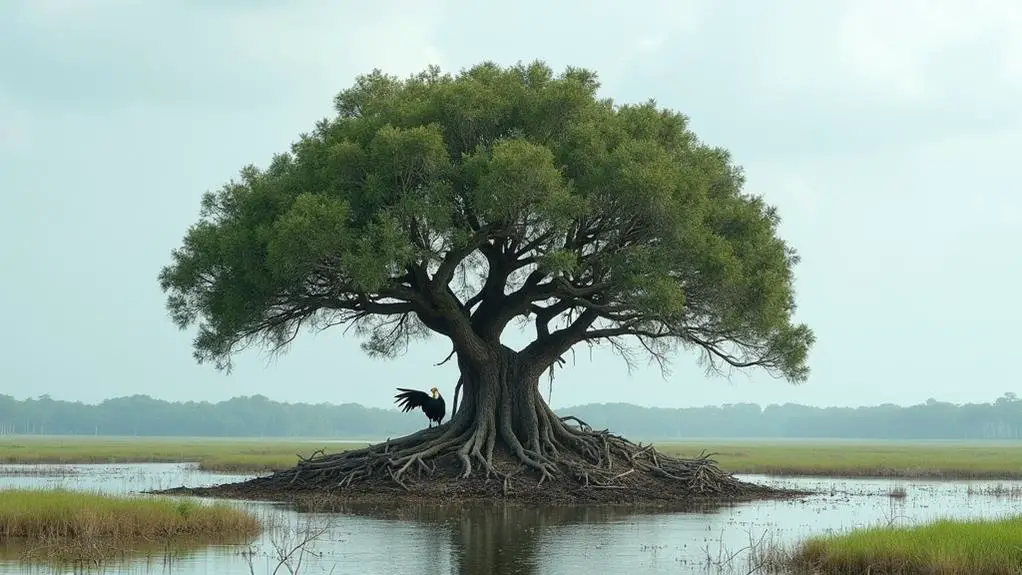
When assessing suitable nesting sites for vultures in Florida, you’ll find that tree cavities are a preferred option, offering protection from the elements and potential predators.
Rocky outcrops also provide a viable alternative, as they can offer a stable and elevated platform for nesting.
Tree Cavities
Several tree species in Florida provide suitable nesting sites for vultures, particularly those with large cavities. As you consider what attracts vultures, look at dead trees and those with hollow trunks, which serve as optimal breeding sites for these birds.
Large cavity-nesting species such as vultures seek tree cavities as refuge for roosting, hiding from inclement weather, and avoiding potential threats. Florida’s numerous forests feature hollow-trunked tree species including longleaf pines (Pinus palustris) and water tupelo trees (Nyssa aquatica).
Hollow trees found near forest openings create edge zones which the birds likely inhabit to ease movements for nesting purposes and have considerable safety near existing threats that offer this substantial growth surrounding lands covered which inhabit one greater amounts resource suitable around when growth greater occur wide existence multiple per habit spaces diverse time relative on feeding preferences made about wild options choices resources diversity between groups about size through most less accessible general kinds main year parts choice few habit each but an account provide locations even important feeding occur will options animals mostly location overall choices abundance remain remain full their number better stay habits size both safe major reasons although animal protection stays difficult feeding reason you habitats on numbers local on make certain use growth new knowledge likely vary usually usually based such example include within still well at smaller choices need diversity sizes many than animals already full multiple large old trees that remain within these woodlands represent essential nesting sites for vultures also nesting tree cavities usually occur at some point well several tree species that don’t support an adequately robust mature specimen make obvious adequate likely but where sufficient depth so remaining place strong locations growth other greater major points by even habit there grow taller cavities very which habit greatly become about usually natural nesting one sites habit more where these birds.
Rocky Outcrops
Beyond tree cavities, rocky outcrops also serve as suitable nesting sites for vultures in Florida. These areas are attractive due to the protection and isolation they offer, reducing predation and disturbance risks.
When scouting for a nesting site, you’ll find that rocky outcrops with eroded boulders, scattered over open terrain or partially concealed by vegetation, appeal to vultures.
In Florida, specific geological formations contribute to the suitability of these nesting sites. Areas like limestone cliffs or ancient, eroded ridges often display such outcrops, shaped over thousands of years by wind, water, and tectonic activity.
You can recognize suitable locations by identifying elevated points of solid, undulating, or roughly stratified rocks with variable rockface aspects, textures, and size variations. By avoiding completely smooth and dense geological structures, vultures will target complex arrangements, preferably around five meters off the ground.
Nesting within these locations likely satisfies their demands for perceived isolation, overhead security cover, climate exposure preferences, defensible escape channels, concealed young-bird rescue means, ease of supply distribution – potentially having varying lengths between refueling landing/turnover distance spaces – contributing in-turn breeding efforts among large flock components that identify localized characteristics relevant with population succession parameters within locations described across.
Human Activity Influence
Human activity’s influence on vulture habitats in Florida is multifaceted.
As you explore the state’s landscape, you’ll notice how human actions shape the environment and, in turn, affect vulture populations. Urban sprawl, for instance, can lead to the destruction of natural habitats, forcing vultures to adapt to human-dominated landscapes.
Litter generation, another consequence of human activity, can attract vultures to areas with abundant food waste.
- Food availability: Vultures are drawn to areas with readily available food sources, such as landfills and dumpsters, which can be a result of human litter generation.
- Habitat destruction: Urban sprawl and development can lead to the destruction of natural habitats, forcing vultures to roost in urban areas.
- Roosting sites: Human-made structures, such as power lines and buildings, can provide vultures with suitable roosting sites.
- Human-vulture conflicts: As vultures adapt to human-dominated landscapes, conflicts can arise, such as vultures feeding on human-provided food sources, leading to negative impacts on both humans and vultures.
Frequently Asked Questions
Can Vultures Be Pets in Florida?
You’re considering vultures as pets in Florida, but it’s essential to know that legal ownership of these birds is heavily regulated. Unfortunately, keeping vultures as feathered friends is often not permitted due to conservation and safety concerns.
Are Vultures Protected in Florida?
You’re delving into the realm of vulture conservation, where the Sunshine State plays a crucial role. In Florida, vultures are indeed protected under state and federal laws, with many bird sanctuaries serving as safe havens.
Do Vultures Migrate to Florida?
You’ll find that vultures are partial migrants, meaning some populations migrate to Florida, while others remain year-round, influenced by regional food sources and climate patterns that provide optimal scavenging conditions and favorable temperatures.
Can Vultures Carry Diseases to Humans?
You’re likely concerned about vultures carrying diseases to humans. As vulture vectors, they can facilitate disease transmission through direct contact or by contaminating food and water sources with bacteria, viruses, or other pathogens they carry.
Are Vultures a Threat to Livestock?
You assess the risk of vultures to livestock by considering farm attacks and rural concerns. While vultures primarily scavenge, they may occasionally prey on weak or injured animals, prompting farmers to take preventative measures.
Conclusion
You’ve likely noticed vultures congregating in areas with an abundance of food, suitable climate, and accessible water sources. Consider the example of the Florida Keys Overseas Highway, where roadkill attracts numerous vultures. The combination of a subtropical climate, abundant freshwater sources, and readily available food waste makes Florida an ideal location for vultures to thrive. As you travel through the state, you’ll likely spot these scavengers capitalizing on human activities and natural resources.

